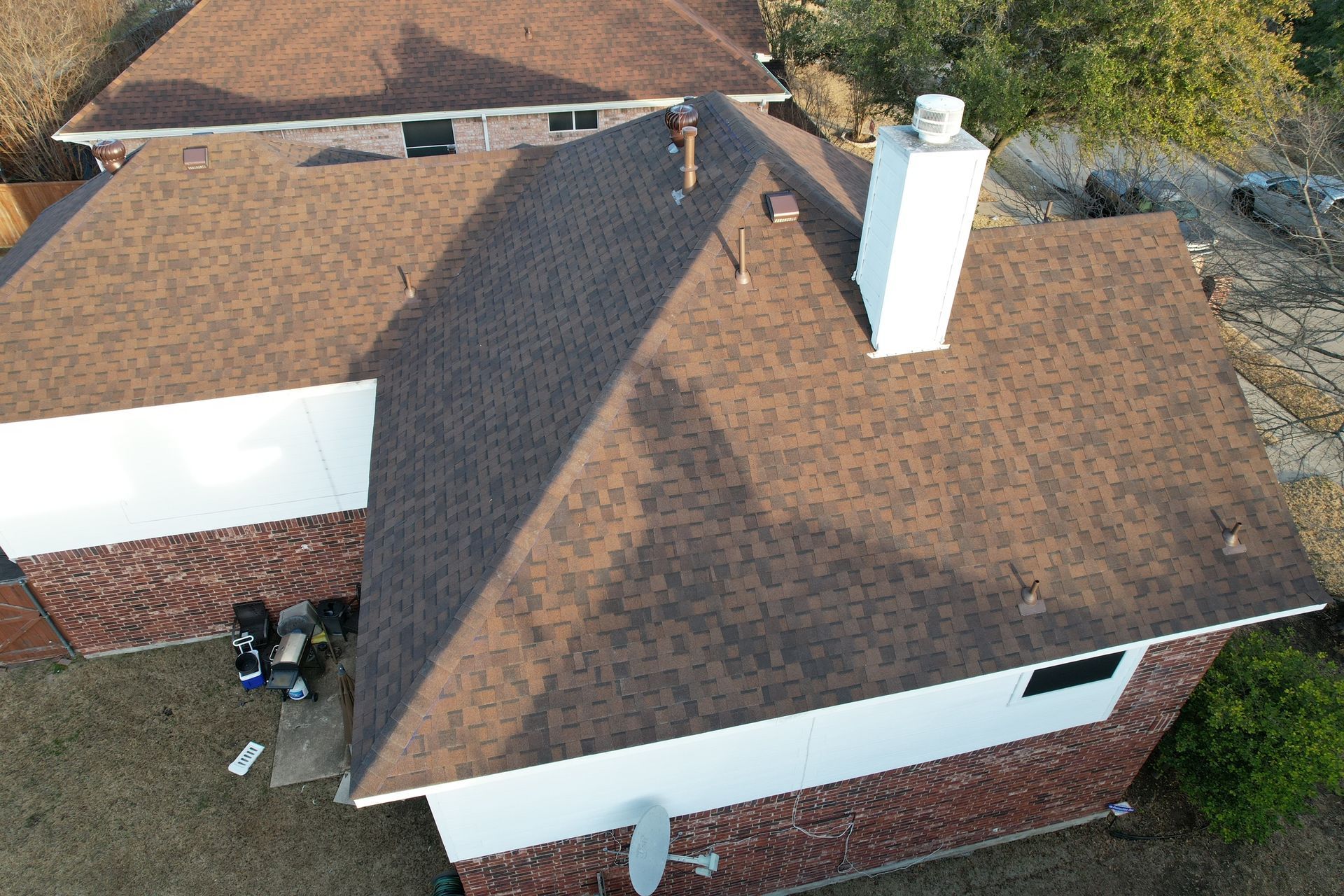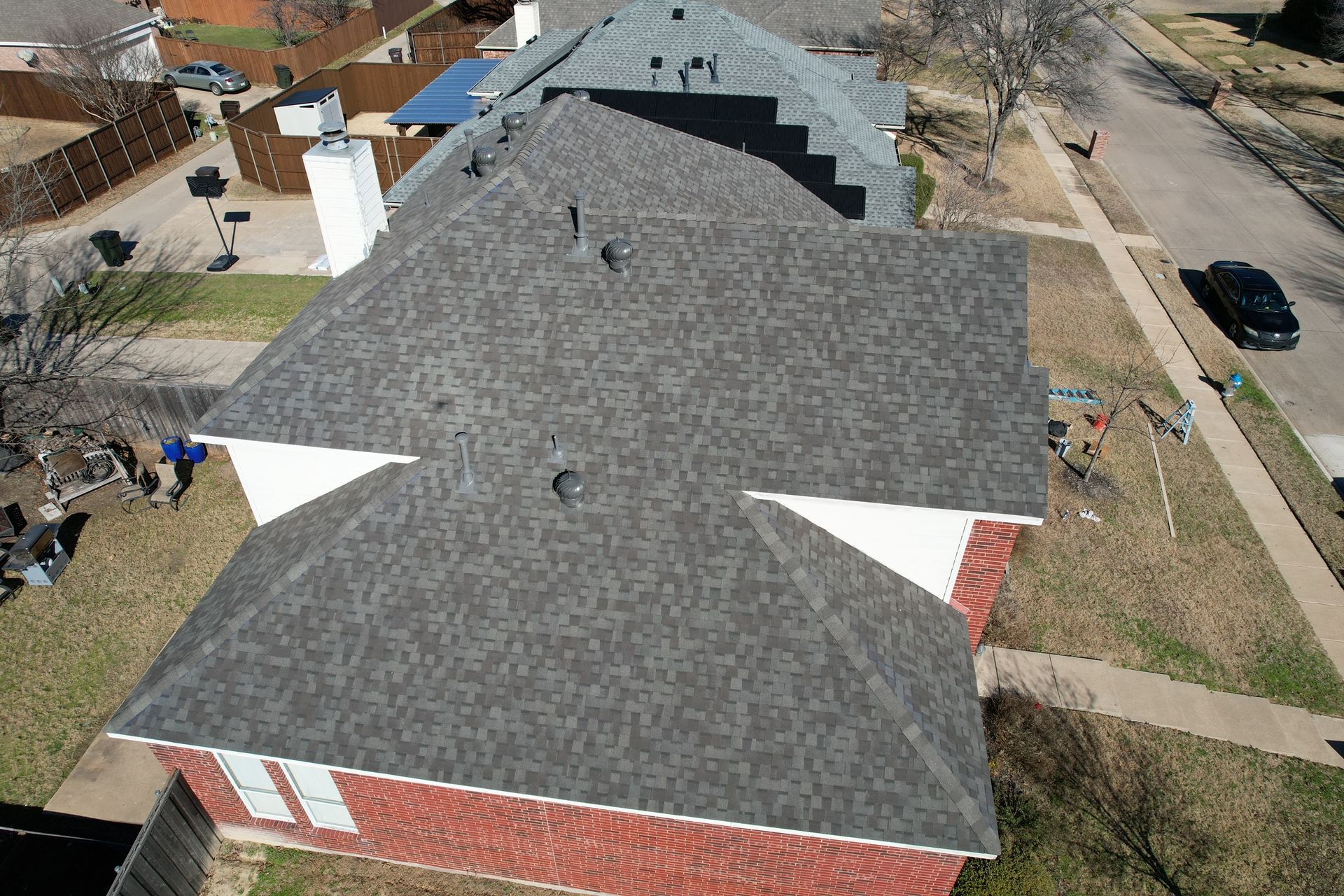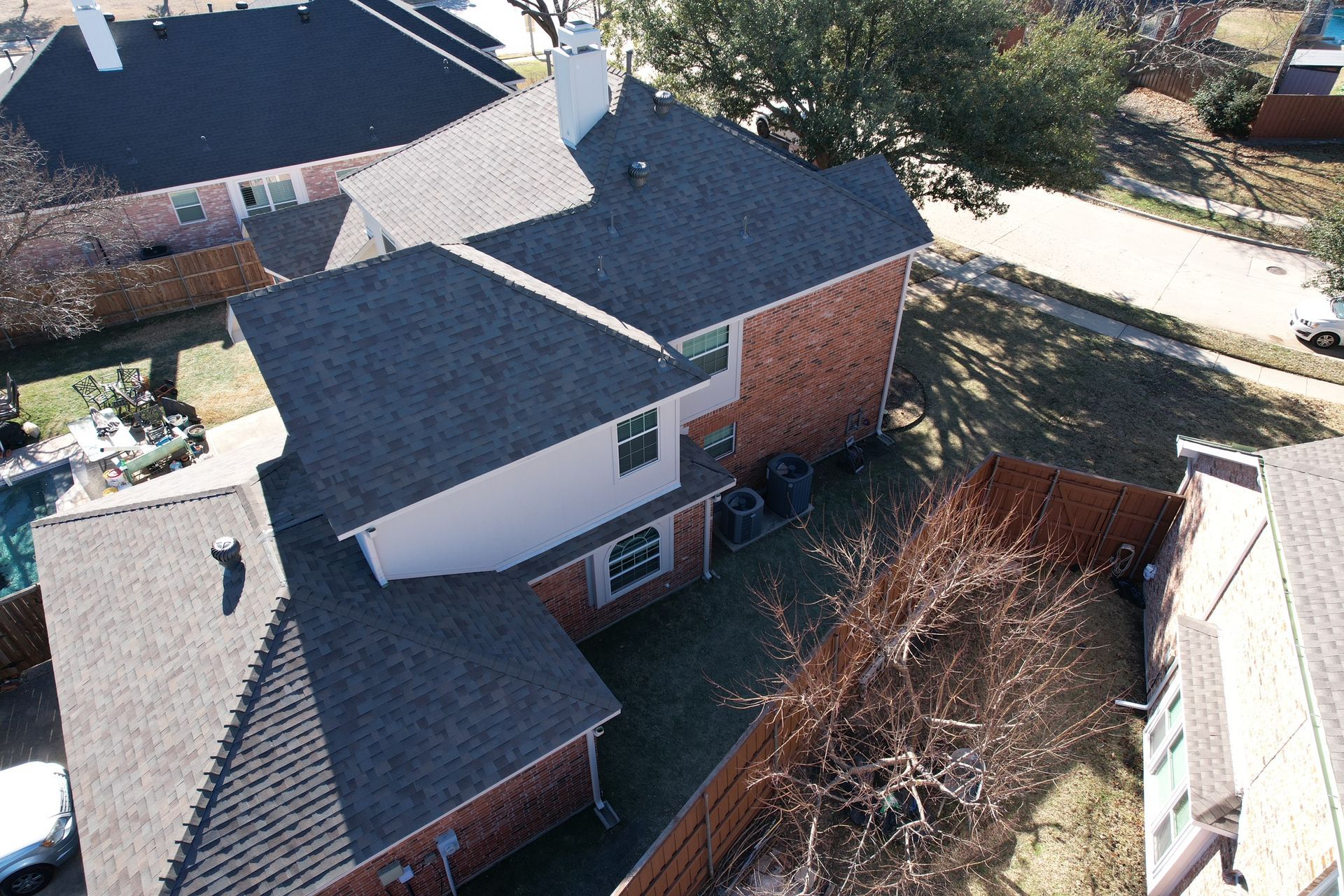Most homeowners and business owners don’t think much about their roofs until a problem occurs. If you’ve had a professional and local roofer such as Texas Star Roofing in the Dallas-Fort Worth area, that’s a good thing. A roofing contractor’s job is to install a roof at your home, office, or business, and let it do its job. You’re not supposed to think much about your roof besides your annual roof inspection, gutter cleaning, or roof maintenance needs. However, knowing how your roof works is good to know so that when something does require you’ll attention, you’ll know what to do.
Texas Star Roofing is a Top Rated Local® roofing contractor, serving the northern Dallas area, including Fort Worth and Plano. We’ve been serving the people of these areas for over 20 years, and we know a thing or two about roofing. In this blog post, we’ll cover how the pitch of your roof can affect your home. Contact us today for your free roofing inspection!
What is roof pitch?
Roof pitch is the angle of your roof or its slope. In roofing, the pitch is usually referred to as a ratio. For example, 2/12 means a roof that rises two inches for every 12 inches covered. This is considered a very low pitch. On the other hand, a roof with a ratio of 9/12, or a roof that rises nine inches for every 12 inches covered is considered a very steep slope. Most roofs today are somewhere in-between.
Why is roof pitch important?
When you remodel or have your home built, you get to choose the roof pitch. This affects the overall look of your home and the ceiling space you’ll have available. Roof pitch also affects the amount of roofing material you will need when installing your roof, as well as what type of roofing material will be best suited to your home, office, or business.
What to consider when choosing a roof pitch
- Water collection and flow . It would probably make sense even to non-roofers that the greater your roof pitch, the easier it is for water to flow off, and the smaller your roof pitch, the harder it will be for water to flow and the more water will collect on the surface of your roof. This is all due to the force of gravity. A high-pitched roof is useful in the winter to get the snow moving off your roof. However, a disadvantage of a high pitch roof in terms of water flow is the fact that more pressure will be put on your gutters in torrential downpours, such as is typical here in north Texas. Hence, wider gutters would be a perfect choice to ease pressure with a higher-pitched roof. Low-pitched roofs in areas where rain is common often don’t do as well since standing water on top of your roof can be a real problem, causing water leaks and mold to grow. This is the main argument against flat roofing systems.
- Fall leaves and other debris . Like water above, gravity affects fall leaves, sticks, and branches when they fall on your roof. With a high-pitched roof, gravity helps move the leaves and grit off your roof through sliding off or being blown away. Low-pitched roofs with less steep angles tend to be the ones that collect fall debris. This can cause mildew problems as leaves especially are adept at holding water content.
- Wind shear . Wind shear to your local roofer such as Texas Star Roofing in Plano refers to the force wind hits your roof as it turns around edges. If you live on the coast or on the plains (both of which are possible in Texas), wind shear can have a great effect on your roof. In this instance, lower-pitched roofs are better at withstanding wind shear forces; whereas higher-pitched roofs have greater angles, creating more force, and potentially ripping off roof shingles or damaging other roofing materials.
- Roof repair . High-pitched roofs, in general, require more roofing materials and require more building materials, which means more cost to the consumer. Lower-pitched roofs are generally less expensive both to install and to maintain.
- Roof materials . If you have your heart set on a slate or copper roof , this may not be feasible if you have a high-pitched roof. Due to the slope and gravity, the heavier materials won’t be stable enough on a steep angle as opposed to a lower angle roof. Similarly, some types of shingles don’t do well on a lower-sloped roof and are more susceptible to roof damage.
Roof pitch and your roof
There’s a lot more than you thought that goes into the building of homes and roofs. Thus, it’s important when adding on an addition to your home or office or when constructing a new home or business to sit down with your local roofer such as Texas Star Roofing or your home builder and discuss the pitch of your roof before construction, especially if you have a certain roofing material in mind that you want.
The Texas Star Roofing Advantage
Here at Texas Star Roofing in Plano, we specialize in both residential and commercial roof repair , roof installation, and roof maintenance. We are experts at helping you determine what kind of roofing material will suit your existing roof as well as what pitch to use in your new home or new office construction. Our strength lies in our diligent attention to detail and stellar customer service. We treat all of our customers, employees, and suppliers how we want to be treated. We use only the highest-quality roofing materials to complete your roofing installation in a timely and efficient manner. We judge our success by customer satisfaction, and we want to hear from you. Let us know how we did, and if we dropped the ball, we want to know about it so we can fix the issue. Roofs especially can be temperamental creatures, and sometimes we make mistakes. Our roofers are the best in the roofing business, and when you partner with us for your new roof, you won’t be disappointed. Contact us today for free roofing inspection or estimate!
Best of the Best Award Winning Service
We at Texas Star Roofing understand the importance of a safe and secure roof over your family's head. We treat every job as if it were for our own family, taking the time to earn the credentials and licenses that make us nationally recognized experts in this field. We are the team you're looking for for quality work, customer experience, and peace of mind.
Our Top-Rated Reviews
Hear What Makes Us Top Rated
“I can tell you that Texas Star
Roofing was First Class from the initial quotation to the very end.”
- Kenneth Coffing
“They deliver competitive pricing, honest proposals, realistic scheduling and superior workmanship.”
- Edward D. Poletto
972-509-7570
Roofing Contractors Association of Texas 03-0184
© 2023 All Rights Reserved| Texas Star Roofing | Privacy
Roofing Contractors Association of Texas 01-0413





